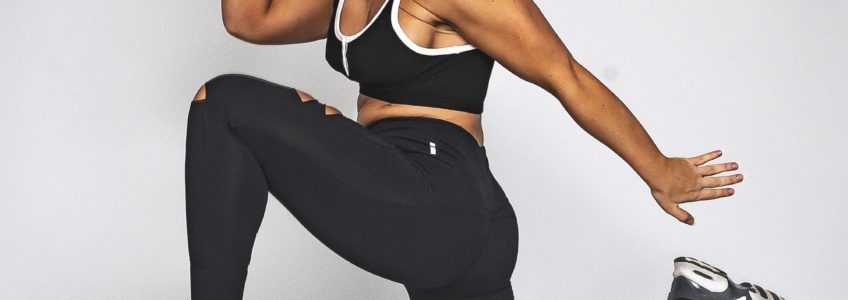
We’d like to express our gratitude to Letisha Bates (@thatPCOScoach) for writing this article for us. Our aim is always to put lived experience front and centre of what we do, but we recognise that takes time and sometimes a toll on those who contribute to resources and conversations. Thank you Letisha for taking the time to share your expertise and experience with us!
What is Polycystic Ovary Syndrome?
PCOS is a common hormone, metabolic, and reproductive disorder that can lead to serious conditions such as type 2 diabetes, cardiovascular disease, mental health conditions, and women with PCOS are 3-6x more likely to have endometrial cancer. It’s currently the leading cause of infertility but can also lead to infant and foetal deaths, and preeclampsia. This syndrome can feel devastating as it affects a woman’s entire body. The classic characteristics are irregular ovulation and excessive androgens which are male trait hormones. This leads to irregular cycles, infertility, weight struggles, acne, hair thinning of the head, with hair growth in undesirable areas, as well as cysts on the ovaries which can cause intense pain.
A common misconception is that you must have cysts on your ovaries. Many with PCOS don’t have cysts and having cysts doesn’t guarantee that you have PCOS. Currently the diagnosing criteria requires that you have 2 of the following 3:
- Irregular/absent ovulation
- Excessive androgens
- Cysts on ovaries
Currently there is no specific treatment for PCOS and options are limited. Don’t be discouraged. It has been determined that lifestyle changes do help reverse symptoms. Exercise can play a large role in managing PCOS naturally. The benefits of exercise include but are not limited to improving moods, weight management, decrease risk of cardiovascular disease, and improving insulin levels to reduce the risk of diabetes. Insulin is often a root issue for many with PCOS due to insulin resistance. This leads to increased weight gain, ovulation irregularities, increased androgens and androgen symptoms, as well as inflammation.
Common exercise myths when it comes to PCOS is that you must work out for long periods of time, workout daily, do intense cardio or cardio only, or that particular types of exercise are bad for PCOS. There is no ‘good’ or ‘bad’ type of exercise for PCOS. Everyone with PCOS is different and all treatment, including exercise, should address your individual needs. Some with PCOS tolerate higher intensities meanwhile others would find that it would exacerbate their symptoms. There is no one-size-fits-all approach.

How does exercise affect PCOS?
PCOS may leave you feeling out of control, but you can control your activity level. Consistent exercise can not only help manage weight struggles, but improve energy, moods, improve hormone balance, and even control appetite.
Some forms of exercise that are particularly helpful to those with PCOS would be weight training, yoga, HIIT and LISS cardio. Evidence shows that weight training can improve body composition, insulin sensitivity, lower LDL and androgens in those with PCOS.
In just 12 weeks of yoga practice, there was evidence of reduction in anxiety in those with PCOS as well as improved weight management and insulin levels. HIIT (high intensity interval training) has been proven to be very effective for PCOS with its benefits of cardio and weight training in a time effective workout.
For some though, HIIT can increase the stress hormone cortisol which leads to further issues with insulin levels, inflammation, and eventually exacerbating PCOS. Symptoms to look for when it comes to overtraining or exercising in a way that doesn’t serve you well would be intense fatigue, reduced recovery, increased inflammation such as puffiness, joint pain, stiffness, sleep disturbances, appetite changes, blood sugar imbalances, weight gain or weight loss resistance, and increased PCOS symptoms.
Another cardio option could be LISS (low intensity steady state) cardio. This form of cardio is lower intensity that you can sustain over time such as aerobic exercises like walking, cycling, swimming, or even dancing. These types of exercises have been proven to benefit PCOS beyond weight loss with improving metabolic markers, fertility, insulin levels, and even ovarian health.
Don’t forget that we have loads of exercise videos, including weight training with kettlebells, dancing, HIIT yoga and pilates over on our Patreon channel for just £1 a month. www.patreon.com/chronicallyawesome

Some strategies that you can use when it comes to exercising for PCOS.
- Start by meeting your body where it’s at. For some that may be walking or seated exercises from a chair. Start with smaller increments of exercise. If you’re coming from a sedentary lifestyle you may want to consider with a 10 minute walk at first.
- Do what you enjoy. PCOS is a lifelong condition. If you don’t enjoy it or find it unsustainable then it will not serve you well long term. It will also be counterproductive in your process of managing your symptoms. Find something you can enjoy and sustain.
- Don’t be rigid when it comes to your activity. You may find that you enjoy using different modalities of exercise. Your routine may include weight training, yoga, and more.
- Aim for no longer than 45 minutes of exercise at a time. Beyond this time frame we risk increasing cortisol, our stress hormone, that can exacerbate PCOS.
- If you’re weight training, do that first. During physical activity we expend energy and this ensures that you’re using that energy wisely.
- You don’t need to work out every day of the week. The body needs time to rest and recover. This doesn’t mean that you shouldn’t be active daily. Your workouts are a small portion of your day and your activity level outside of your workout adds up. Slowly start increasing your physical activity on a daily basis.
Helpful resources:

